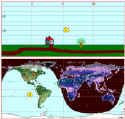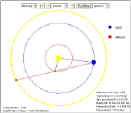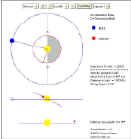On Wednesday, November 8, 2006, a transit of Mercury was visible in the afternoon and evening for much of the North America. It began around 2:12 p.m. EST and continued until 7:10 p.m. EST, though sunset occured before then for many viewers. During the transit, the silhouette of Mercury was visible by day as the innermost planet passed directly between the earth and the sun.
Because Mercury's apparent diameter was so small, the transit required a magnified view through a solar filter. To preserve eyesight, one could use only safe solar viewing techniques. The next transit of Mercury will be in May 2016.
2006 Transit of Mercury Details
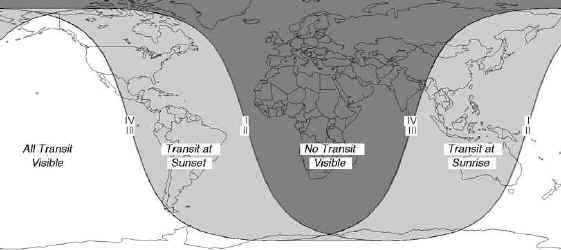 |
http://sunearth.gsfc.nasa.gov/eclipse/OH/transit06.html
Transit of Mercury details from Fred Espenak include a table giving the
times of major events during the 2006 transit; a map showing the global
visibility; and the Index to Local Circumstances, showing when the transit is
seen from locations around the world. Excerpted diagrams, above, courtesy of Fred Espenak.
 http://nasadln.nmsu.edu/dln/content/catalog/details/?cid=546
http://nasadln.nmsu.edu/dln/content/catalog/details/?cid=546
NASA coverage of the transit of Mercury featured a live webcast, a panel
of scientists sharing their expertise, and lesson plans. Targets students
and informal educators for grades 5-8; from the NASA Digital Learning Network.
 http://sunearthday.nasa.gov/2007/events/mercurytransit.php
http://sunearthday.nasa.gov/2007/events/mercurytransit.php
NASA's Sun-Earth Day team offers links to NASA webcast, supporting
materials, and a list of Local Happenings.
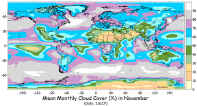 http://home.hetnet.nl/~smvanroode/mercury.html
http://home.hetnet.nl/~smvanroode/mercury.html
Find out if you will be able to see Mercury during the November
8, 2006, transit. To compute your local circumstances, just enter your longitude
and latitude and press the compute button. Site also suggests best viewing and
weather prospects. From Steven van Roode.
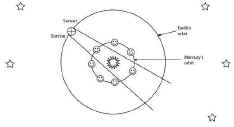 http://www.astrosociety.org/education/publications/tnl/69/mercury.html
http://www.astrosociety.org/education/publications/tnl/69/mercury.html
Universe in the Classroom issue includes background on the transit
of Mercury; where the planet appears on the sun; what you can expect to see;
unsolved mysteries about Mercury; the Messenger spacecraft en route to the
planet (arriving in March 2011); an activity comparing Mercury's orbit to
Earth's; an activity on why transits are so rare; and resources. Issue No.
69 - Fall 2006, by Suzanne Gurton, Education Manager of the Astronomical Society
of the Pacific (ASP). Also available as a pdf
version.
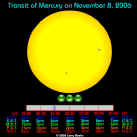 http://shadowandsubstance.com/
http://shadowandsubstance.com/
Simulation of the transit of Mercury shows the planet crossing the sun in
multiple U.S. time zones; by Larry Koehn. Note that sunspots will depend
on the solar conditions of November 8, 2006.
 http://www.exploratorium.edu/transit/
http://www.exploratorium.edu/transit/
The Exploratorium will provides a live webcast of the transit of Mercury
from Kitt Peak. Additionally, animation shows Mercury passing between
earth and sun during Mercury's orbits around the sun.
www.jgiesen.de/astro/AstroApplets/index.html
Set these applets in motion to witness the motion of the inner planets
transiting the sun from a different perspective. Five controllable applets by Juergen Giesen allow you
to highlight the motions of Mercury:
www.venus-transit.de/TransitObserver/index.html
Transit Observerwww.venus-transit.de/PlanetPhases/index.html
Phases of Mercury
www.venus-transit.de/PlanetMotion/index.html
Planetary Motion of Mercurywww.venus-transit.de/geocentric/index.html
Geocentric Motion of Mercurywww.venus-transit.de/TransitMotion/
Transit Motion
![]() http://science.nasa.gov/headlines/y2006/20oct_transitofmercury.htm
http://science.nasa.gov/headlines/y2006/20oct_transitofmercury.htm
Play audio file or download the story of Mercury as an mp3 file.
 http://www.nao.rl.ac.uk/nao/transit/M_2006/
http://www.nao.rl.ac.uk/nao/transit/M_2006/
HM Nautical Almanac Office lists geocentric circumstances.
 http://aa.usno.navy.mil/data/docs/Mercury2006.pdf#search=%22transit%20mercury%202006%22
http://aa.usno.navy.mil/data/docs/Mercury2006.pdf#search=%22transit%20mercury%202006%22
US Naval Observatory file lists when transit can be seen from sites around the
world. Includes ingress and egress times at both the interior and exterior
contacts (that is, when the planet is just touching the edge of the
sun).
 http://www.lpl.arizona.edu/~rhill/alpo/transitstuff/transit061109.html
http://www.lpl.arizona.edu/~rhill/alpo/transitstuff/transit061109.html
The Association of Lunar and Planetary Observers (ALPO) encourages observers to
submit drawings, photographs or images to the ALPO Mercury/Venus Transit
Section. Article by John Westall describes what one can expect to see and
offers tips for recording the event.
 http://public.gettysburg.edu/~marschal/clea/Transitlab.html
http://public.gettysburg.edu/~marschal/clea/Transitlab.html
Contemporary Laboratory Experiences in Astronomy (Project CLEA) offers a
free exercise to quantify the Astronomical Unit using telescopic images of the
2004 transit of Venus. "Software provided enables student to access the
GONG images, display them as still images or animations, measure and record the
positions of of the silhouette of the planet, plot its track across the sun, and
thus determine the apparent parallax of the planet and the length of the
astronomical unit. A second set of images of the transit of Mercury, May 7,
2003, is also available."
 http://www.meade4m.com/articles/archive/4M_Scott_1151393729.html
http://www.meade4m.com/articles/archive/4M_Scott_1151393729.html
Article includes text of Edmond Halley's description of how transits can be used
to measure the distance from the sun to the earth.
 The
September/October 2006 issue of Mercury magazine features "Mercury's
Time to Shine" by Clifford Cunningham. The article illuminates the
(sometimes false) claims and observations of mercury transits through the ages;
Volume 35, Issue 5, pp.12-19.
The
September/October 2006 issue of Mercury magazine features "Mercury's
Time to Shine" by Clifford Cunningham. The article illuminates the
(sometimes false) claims and observations of mercury transits through the ages;
Volume 35, Issue 5, pp.12-19.
 http://www.spaceweather.com/
http://www.spaceweather.com/
Spaceweather tracks current conditions on the sun, including the evolving
sunspots that may rival--if not exceed--the apparent size of
Mercury.
![]() http://www.seds.org/nineplanets/nineplanets/mercury.html
http://www.seds.org/nineplanets/nineplanets/mercury.html
Background on Mercury and our scientific understanding of the planet, with
emphasis on images returned from the Mariner 10 spacecraft.
 http://messenger.jhuapl.edu/
http://messenger.jhuapl.edu/
Messenger is a NASA Discovery mission to conduct the first orbital study of the
innermost planet. The spacecraft will be inserted into orbit around Mercury in
March 2011.
Previous Transits of Mercury
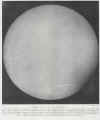 mercury-marschall.jpg
mercury-marschall.jpg
Transit of Mercury, 1914 November 7, photograph taken at Greenwich; image
courtesy of Laurence Marschall.
 http://sohowww.nascom.nasa.gov/hotshots/2003_05_07/
http://sohowww.nascom.nasa.gov/hotshots/2003_05_07/
SOHO spacecraft captures 2003 transit of Mercury.
 http://sohowww.nascom.nasa.gov/hotshots/2003_05_07/latest_eit.mpg
http://sohowww.nascom.nasa.gov/hotshots/2003_05_07/latest_eit.mpg
Movie sequence of Mercury passing in front of sun, as seen by SOHO
spacecraft through filters of four colors.
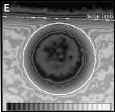 http://www.williams.edu/astronomy/eclipse/transits/transitofmercury.htm
http://www.williams.edu/astronomy/eclipse/transits/transitofmercury.htm
Jay Pasachoff and Glenn Schneider explore the science of the inner planets
during transits. For the 2006 Mercury transit, they will "attempt to measure the sodium component of
Mercury's extremely tenuous 'atmosphere,' measure its height, and
determine how it varies from Mercury's pole to its equator.
They will additionally use the polarimetry capability of the instrument
to try to detect the weak Mercurian magnetic field against that of the
Sun." See November 2006 press release
for event details, as they will be part of webcast from Hawaii.
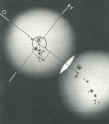 http://didaktik.physik.uni-essen.de/~backhaus/Venusproject/mercury2003.htm
http://didaktik.physik.uni-essen.de/~backhaus/Venusproject/mercury2003.htm
Project uses 2003 transit of Mercury observations to measure the distance to
the sun.
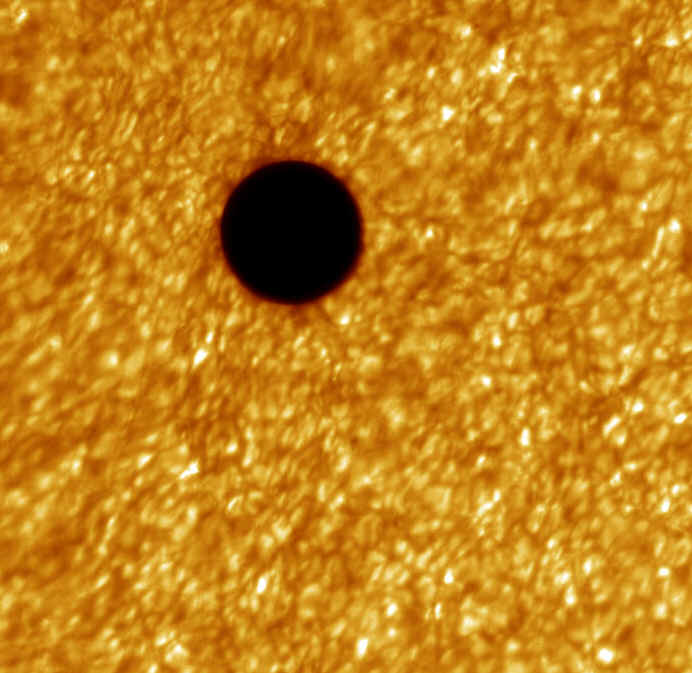 http://www.solarphysics.kva.se/Mercurytransit7May2003/
http://www.solarphysics.kva.se/Mercurytransit7May2003/
The Royal Swedish Academy of Sciences offers mpg movie (http://www.solarphysics.kva.se/Mercurytransit7May2003/movies/mercury_color.mpg)
and separate jpeg images from the 2003 transit .
 http://www.abingdonastro.org.uk/mbobmerct1.htm
http://www.abingdonastro.org.uk/mbobmerct1.htm
Amateur observers photograph a previous transit of Mercury, which hints at the
smallness of Mercury (or the enormousness of the sun).

Mira Public Observatory at Grimsbergen, Belgium captures the last contact of the
2003 Transit of Mercury.
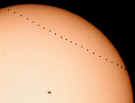 http://apod.nasa.gov/apod/ap030527.html
http://apod.nasa.gov/apod/ap030527.html
Astronomy Picture of the Day features image of Mercury transit with sunspots.
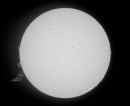 http://antwrp.gsfc.nasa.gov/apod/ap030513.html
http://antwrp.gsfc.nasa.gov/apod/ap030513.html
Astronomy Picture of the Day features image of Mercury transit with sunspots,
plages, and prominences.
http://www.ast.cam.ac.uk/~ipswich/Observations/Mercury_Transit_2003_05_07/Transit.htm
Views in 2003 from Ipswich, UK, which will not see the 2006 event.
18th, 19th, and 20th Century
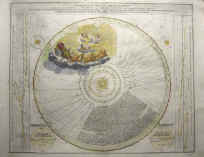
In 1742, Johann Doppelmayer features transits of Mercury and Venus in Atlas
Coelestis while describing phenomena associated with the inferior
planets (Plate 7).
doppel-mercury.JPG
Doppelmayer illustrates the path of Mercury across the face of the sun for the November 6, 1720, transit of Mercury.
Doppel1448.jpg
Inset shows personified Mercury and Venus passing between the earth and the sun, depicting the circumstances that create a transit.
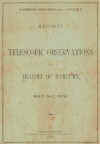 mercury1878cover.jpg
mercury1878cover.jpg
Reports on Telescopic Observations of the Transit of Mercury, May 5-6,
1878. Includes individual reports from Asaph Hall, William Harkness,
J.R. Eastman, Edward S. Holden, and Dr. Henry Draper.
mercury-1878fig2.jpg
Because "the cusps will appear undulating and diffused; and for a few seconds it will be doubtful whether contact has or has not taken place...the best the observer can do is watch for the phase represented by disk I...The moment of true contact is that at which the undulation of true sunlight across the dark space is just beginning."
mercury-draper_obs.jpg
Arrangement of Dr. Henry Draper's equatorial-room and of the instruments at Dr. Draper's Observatory.
mercury-irradiation.jpg
The black drop effect is attributed to "a very variable amount of irradiation of bright images on the retina," though with caveats.
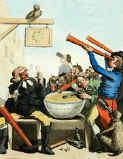 mercury-eckstein.htm
mercury-eckstein.htm
Auction item: Eckstein painting of Transit of Mercury, on the 7th of May
1799.
John Ewing, "An Account of the Transit of Mercury over the Sun, on November 9th 1769.," Transactions of the American Philosophical Society, vol. 1 (1771).
 mercury-marschall.jpg
mercury-marschall.jpg
Transit of Mercury, 1914 November 7, photograph taken at Greenwich; image
courtesy of Laurence Marschall.
2006 Transit of Mercury Observing Opportunities
Note: Since the number of observing locations has grown, this information has been moved to its own, yet limited, "View the Transit" page. Because observing opportunities are rapidly growing as the 2006 transit of Mercury approaches, we encourage organizers to list their event at the NASA Sun-Earth "Local Happenings", below.
 http://sunearthday.nasa.gov/2007/events/mercurytransit.php
http://sunearthday.nasa.gov/2007/events/mercurytransit.php
NASA's Sun-Earth Day team offers links to live webcast, supporting
materials, and a list of Local Happenings.
 http://www.exploratorium.edu/transit/
http://www.exploratorium.edu/transit/
The Exploratorium will provides a live webcast of the transit of
Mercury from Kitt Peak. Additionally, animation shows Mercury passing
between earth and sun during Mercury's orbits around the sun.
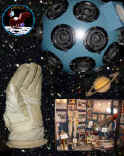 phm/mercury.htm
phm/mercury.htm
The PHM Planetarium in Mishawaka, IN, had a special program on Tuesday,
November 7, at 6:30 p.m. that conveyed the significance of the transit,
what observers can expect to see, and insight into the planet closest to the
sun. Solar-filtered telescopes were available for the public to
view the transit of Mercury on November 8, 2006,
from 1:00 to 5:00 p.m. Located at Bittersweet School just north of
Penn High School, the planetarium also featured extensive programs and observing opportunities
for the 2004 transit of Venus. Images of the 2006 transit of
Mercury are at mercury-images.htm.
Miscellaneous
 http://www.spaceweather.com/mercury/index.php
http://www.spaceweather.com/mercury/index.php
Enter your photo or drawing of the transit of Mercury as seen through a
Hydrogen-alpha telescope in this contest. Submissions due November 13,
2006.
www.nightwise.org
For all the wrong reasons, solar and lunar celestial phenomena are becoming
more significant as observational events. Traditional dark sky viewing
opportunities are being lost from poor and excessive outdoor lighting that is
degrading our nighttime heritage. Once sky glow overwhelms the starry
firmament, about all that's left will be eclipses and transits. Nightwise
addresses lighting issues in the interest of saving energy and money;
improving motorist and pedestrian safety; benefiting animal habitats and human
health; increasing security and the sense of well-being; and preserving the
night sky.
